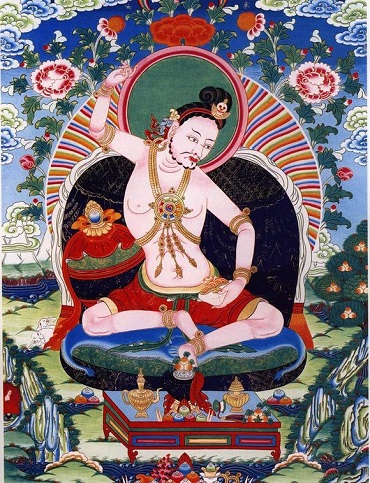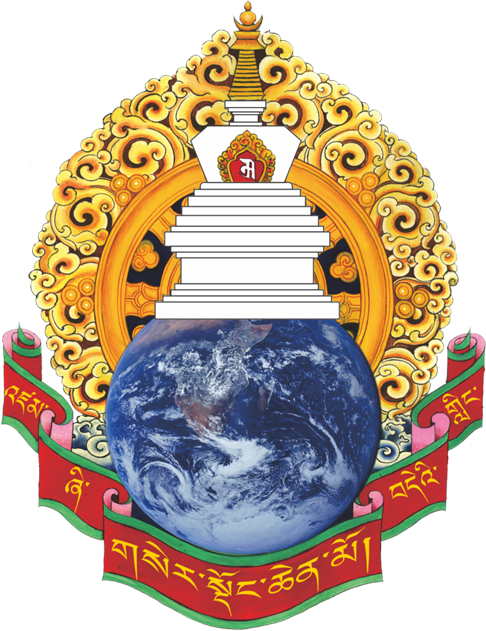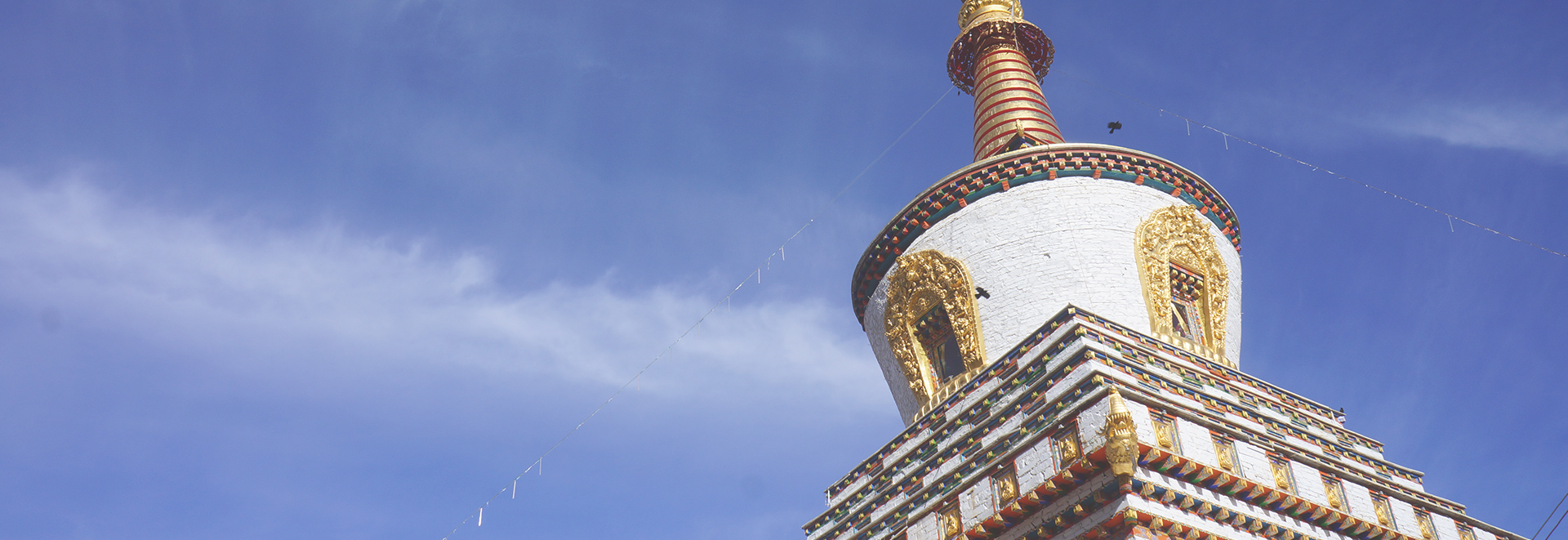Longchen Nyingtig Lineage
LINEAGE

Master Shrīsiṃha (dPal Gyi Seng Ge) was born in a city called Shokyam on Sosha Island in China. His father was Gewe Denpa (Virtuous One) and his mother was Nangwa Salwa Raptu Khyenma (Clear and Wise One). At the age of fifteen, he went to the Bodhi
Tree of China and studied with master Haribhala for three years, and he became well versed in the five subjects. Then, while he was traveling westward by camel toward the city called Suvarṇadvīpa (Golden Island), in the sky he beheld the pure vision of Avalokiteshvara, who said, “O fortunate son of good family, if you really wish to attain the result, there is a city in India named Sosadvīpa: go there.” Shrīsiṃha was pleased with the prophecy, but he thought to himself, “Still, I ought to learn the complete outer and inner tantras first, so that it will be easier for me to understand the extraordinary teachings.” So he went to the Five Peaks (Wu t’ai shan) sacred to Mañjushrī, and there he studied the complete outerand inner tantras with master Bhelakīrti for seven years. He took ordination as a monk (bhikṣhu) and maintained the discipline for thirty years. Again Avalokiteshvara repeated his earlier prophetic advice. Thereupon Shrīsiṃha thought, “It will be better to travel to Sosadvīpa miraculously so that there won’t be any obstructions along the way.” So he practiced a sādhana for three years and attained power. Then he went like the wind, about two feet above the ground. He reached Sosadvīpa and met Mañjushrīmitra. There he received teachings for twenty-five years and practiced them.
According to Khandro Nyingthig and other sources, Shrīsiṃha also went to Shītavana and received Nyingthig teachings from Prahevajra directly, and later he transmitted them to Guru Padamasambhava and Vairochana.
Then master Mañjushrīmitra attained nirvāṇa and his mortal body disappeared at the top of the stūpa in a charnel ground in the center of Sosadvīpa. The atmosphere was full of music and the sky was radiant with lights. Shrīsiṃha uttered a prayer of lamentation, saying,
Alas, alack, alas! O Vast Expanse!
If the light of the Vajra Master is obscured,
Who will dispel the darkness of the world?
Suddenly Mañjushrīmitra appeared in the sky and, stretching out his right hand, placed in Shrīsiṃha’s palm a jeweled casket the size of a fingernail. In it Shrīsiṃha found the testament of Mañjushrīmitra, Gomnyam Trukpa (The Six Experiences of Meditation), written on a leaf of five precious metals with the ink of a hundred precious substances.
Shrīsiṃha gained total confidence in his realization and understood the extraordinary tantras, both words and meaning, without any errors. He withdrew the texts that had been concealed at Bodhgayā by Mañjushrīmitra and returned to China.
In China he arranged the Me-ngagde teachings into four cycles (sKor): Outer, Inner, Esoteric, and Innermost Esoteric. He designated the first three cycles as the “elaborate teachings” and concealed them in the balcony of the temple near the Bodhi Tree in China. TheInnermost Esoteric teachings, the Nyingthig, he kept with him without separation, but then, as instructed by a ḍākinī, he concealed them in a pillar of Tashi Trigo (Auspicious Myriad Gate) temple and entrusted them to Ekajaṭī. Then, enjoying esoteric exercises, he stayed at Siljin (Provider of Coolness) charnel ground in China as the master of the hosts of ḍākas and ḍākinīs.
He conferred the oral transmissions of the Outer, Inner, and Esoteric cycles of Me-ngagde on Vimalamitra. He conferred the oral transmission of the four cycles of Me-ngagde with their texts on Jñānasūtra. He also conferred on him the teachings and empowerments of Me-ngagde known as elaborate empowerment, simple empowerment, very simple empowerment, and utmost simple empowerment.
Then Shrīsimha dissolved in radiant body, and his testament, Zerwu Dünpa (The Seven Nails), descended into the hands of Jñānasūtra. It includes these lines:
Homage to the perfection of primordial wisdom, [the union of] clarity and emptiness.
The awareness wisdom, which pervades all and appears in all,
Is open and impartial.
For nailing [the awareness] on the changeless ground,
By putting the seven great nails on the narrow paths of saṃsāra and nirvāṇa,
Changeless great bliss arises in my mind. . . .
[a] Strike the nail of unhindered wisdom of clarity at the juncture of saṃsāra and nirvāṇa [in order to unite them as oneness].
[b] Strike the nail of self-appearing light at the juncture of mind and objects.
[c] Strike the nail of natural-pure essence at the juncture of mind and matter.
[d] Strike the nail of freedom from views at the juncture of nil and eternity.
[e] Strike the nail of awareness, which is beyond phenomena, at the juncture of phenomena and the nature of phenomena.
[f] Strike the nail of totally liberated five-doors [sense faculties]at the juncture of excitement and torpor.
[g] Strike the nail of primordially perfect Dharmakāya at the juncture of appearances and emptiness.
*Above Contents from Masters of Meditation and Miracles: Lives of the Great Buddhist Masters of India and Tibet by Tulku Thondup (1999).


